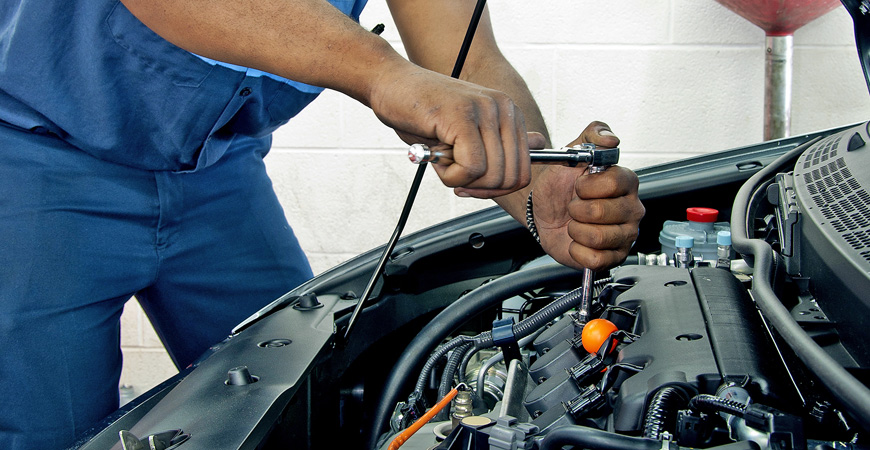The Intricate Dance of Transmission: What Transfer Cases Do
Unpacking the Mechanics: The Role of Each Component
At the heart of a Nissan’s four-wheel and all-wheel drive system lies the transfer case, a crucial component that orchestrates the distribution of power between the front and rear axles. Serving as the intermediary between the transmission and the drive axles, the transfer case enables optimal traction and control, particularly under varying driving conditions. Composed of several components—such as the chain or gears, the output shafts, and housing—the transfer case ensures that power is delivered efficiently to the wheels that need it most.
The main components of a transfer case include the input gear, which receives power from the transmission, and the output gears, which deliver that power to the front and rear axles. Some transfer cases feature a chain drive, while others utilize a gear-driven mechanism. This distinction affects performance, as chain-driven systems are generally quieter and lighter, thereby offering improved efficiency. Surging power through these components requires precision engineering; hence, Nissan has employed advanced manufacturing technology to ensure durability, ensuring that the vehicle remains reliable under pressure.
Additionally, transfer cases may incorporate differentials—either open or locking—that allow for variations in wheel speeds, particularly useful during cornering. Locking differentials provide maximum traction on demanding terrains by linking the wheels to turn at the same rate. By understanding these mechanisms, Nissan owners can appreciate how this system not only enhances driving performance but also adds a dimension of control, making their vehicles adept at tackling a range of environments.
All-Wheel vs. Four-Wheel Drive: Understanding the Differences
In any discussion about transfer cases, the terms all-wheel drive (AWD) and four-wheel drive (4WD) often emerge, creating some confusion among vehicle owners. While both systems aim to improve traction and control, the implementation and usage scenarios differ significantly. AWD is typically designed for on-road use, providing power automatically to all four wheels based on traction needs. It is often integrated within the vehicle’s system, necessitating minimal driver intervention. In contrast, 4WD tends to be more robust, designed for off-road or adverse conditions where the driver can manually select between two-wheel drive and four-wheel drive modes.
The Nissan transfer case typically caters to both systems, offering features tailored to specific driving needs. AWD systems in Nissan vehicles, such as the Rogue, utilize an automatic transfer case that dynamically transfers power between axles without driver input. This technology enhances fuel efficiency during regular driving while ensuring that grip is available when required. Conversely, Nissan’s 4WD systems, found in models like the Pathfinder and Xterra, often include a transfer case with high and low range gearing, allowing drivers to select the optimal setting for rugged terrains or heavy towing situations.
Understanding these distinctions can be pivotal, as it affects how drivers engage with their vehicles, particularly in challenging conditions. By choosing the right options for their driving environment, Nissan owners can maximize performance while safeguarding their transfer case from unnecessary strain.
How Transfer Cases Enhance Off-Road Capabilities
One of the distinctive features of Nissan vehicles equipped with a transfer case is their enhanced off-road capabilities. When venturing into challenging terrains—be it muddy trails, rocky paths, or snow-covered roads—the transfer case plays a vital role in maintaining control and stability. By enabling power distribution to all four wheels, the transfer case ensures that even when one or more wheels encounter slippage, others can compensate by receiving increased torque.
Nissan’s transfer case systems are particularly well-regarded for their innovative features, such as locking differentials and electronic control modules, which govern transfer case operation. Locking the transfer case ensures that power is equally distributed across both axles, providing unmatched traction in dire conditions. For instance, when traversing a steep incline or uneven surfaces, such systems can prevent wheel spin and maintain forward momentum.
Moreover, Nissan’s advancement in technology such as hill start assist, traction control systems, and active brake limited slip further enhance the functionality of their transfer cases. These additions offer a safety net for drivers venturing off-road—allowing them to navigate through technical obstacles with confidence. Such features alleviate common fears associated with off-roading, making it an enjoyable experience. In understanding these capabilities, Nissan owners can make informed decisions about when and how to exploit the robust potential of their vehicles.
Common Transfer Case Issues: Signs You Shouldn’t Ignore
Identifying the Warning Signals: Noises and Fluid Leaks
Like any component of an automobile, transfer cases can experience issues that, if left unchecked, can lead to significant problems down the road. Awareness of warning signals is crucial for timely intervention. One of the most prominent indicators of transfer case trouble is abnormal noise. Grinding, clunking, or whirring sounds during operation could signify a problem—such as worn gears or insufficient lubrication—prompting an immediate inspection. These sounds are your vehicle’s cry for help; ignoring them may lead to heightened damage and costly repairs.
Another significant concern stems from fluid leaks. While a minor amount of seepage may not immediately warrant concern, significant fluid loss is detrimental. Transfer cases rely on proper lubrication to function optimally, and low fluid levels can lead to overheating and mechanical failure. Drivers should regularly inspect the underbody and around the transfer case for signs of fluid puddles, particularly after off-road excursions. Understanding the properties of transfer case fluid—such as its color and consistency—can also help identify issues; for instance, milky or discolored fluid may indicate contamination, while a darkened hue can signal that it needs replacing.
Diagnostics 101: When to Consult a Mechanic
While DIY checks can support vehicle maintenance, knowing the right moment to consult a professional is vital. Complex issues or persistent noises can signify underlying problems that require specialized diagnostic equipment and expertise. If a driver notices consistent indicator lights related to the drivetrain or significant performance changes, such as difficulty shifting or loss of power to one axle, it’s advisable to consult a mechanic specialized in drivetrain systems. Mechanics are equipped to conduct thorough inspections, often utilizing computerized diagnostic tools to identify potential malfunctioning parts within the transfer case.
Another situation that necessitates a visit is when fluid levels drop rapidly despite frequent top-offs. This may indicate a hidden leak or a breach in the seals, which can only be accurately diagnosed through inspection. Additionally, changes in driving behavior—such as jerky movements during gear shifts while in four-wheel or all-wheel drive—should not be brushed aside, as they potentially signify severe internal issues requiring immediate attention. Regular maintenance checks and proactive measures can create a clear pathway to diagnosing issues before they escalate into costly repairs.
Long-Term Damage: The Consequences of Neglect
Neglecting transfer case maintenance can have dire consequences that extend beyond simple inconvenience. As with many vehicle components, consistent wear and tear can lead to premature failure, significantly impacting driving safety and vehicle reliability. Continuous operation with insufficient lubrication can wear gears, bearings, and other internal components, often leading to catastrophic failure, which might necessitate a complete transfer case replacement—an expensive outcome that can easily be avoided with routine checks.
Moreover, the financial implications extend beyond repair costs. Difficulty in controlling power distribution can lead to problematic driving conditions, especially in inclement weather or challenging terrains, creating potential hazards for the driver, passengers, and other road users. Accounting for such risks serves to illuminate the importance of being proactive with transfer case maintenance—this includes regular fluid changes, scrutinizing for leaks, and engaging in timely inspections that can uphold the life expectancy of the vehicle.
In the end, paying attention to the transfer case translates into an expanded lifespan for the entire drivetrain system. Ultimately, owners who prioritize maintenance are rewarded with not just a reliable vehicle but also peace of mind while navigating various driving conditions.
Maintenance Magic: Keeping Your Transfer Case in Peak Condition
Fluid Matters: Selecting the Right Gear Oil
The correct selection and management of transfer case fluid are pivotal components of vehicle maintenance. Transfer case fluid serves to lubricate moving parts, reducing friction and preventing overheating. Consequently, selecting the appropriate fluid—one that meets Nissan’s specifications—can significantly affect the operational efficiency of the transfer case. Most Nissan models require specific fluid types, commonly found in the owner’s manual or through the dealership. Utilizing the wrong fluid, or allowing it to become degraded over time, can lead to premature wear on gears and bearings, driving the necessity for repairs or replacements up significantly.
Regularly checking the fluid levels and the condition plays a critical role in ongoing maintenance. The transfer case fluid should be relatively clear, devoid of contaminants. Owners should inquire about viscosity ratings and ensure that their choice aligns with environmental conditions, particularly if they frequently engage in off-road activities. For instance, a vehicle used in extreme temperatures may benefit from synthetic fluids, as these perform better under various temperature fluctuations, thereby enhancing system reliability.
In essence, a well-informed choice regarding gear oil ensures that a critical part of the vehicle runs efficiently and contributes positively to the overall performance. Regular fluid changes maintain the integrity of the system, thwarting the risk of serious mechanical failures.
Regular Servicing: How Often Should You Check Your Transfer Case?
When it comes to maintaining your vehicle, establishing a service schedule for your transfer case is essential. Nissan generally recommends a comprehensive check-up of the transfer case fluid and components every 30,000 to 60,000 miles, particularly for those operating in demanding conditions, such as towing or off-roading. This servicing schedule allows mechanics to evaluate not only the fluid’s condition but also the functioning of other critical parts, such as seals and gaskets that might wear over time.
During these scheduled checks, mechanics can also flush the system to remove contaminants that might accumulate over time, ensuring that the transfer case operates at its best capabilities. Additionally, drivers should remain vigilant in monitoring driving behavior, responding to any novel noises, shifting difficulties, or other operational changes promptly. Maintaining an awareness of how often your vehicle is serviced can save considerable long-term costs by catching potential issues early.
DIY Tips: Basic Maintenance Every Owner Should Know
For hands-on Nissan owners, engaging in DIY maintenance can save significant costs while providing insight into their vehicle’s performance. Basic maintenance actions such as inspecting for fluid leaks, visually examining the transfer case for damages or wear, and ensuring that the fluid levels are consistent are essential. If comfortable, drivers might consider a fluid change themselves, making sure to follow the vehicle-specific requirements outlined in the manual.
Moreover, acquiring basic knowledge of the transfer case operations can empower owners to recognize issues more readily. This might include understanding the physical layout of the transfer case components, which will help identify if something appears out of place or if unusual noises emerge during operation. Utilizing resources or community forums can provide additional insights and tips from experienced Nissan owners, creating a supportive network for maintaining your vehicle.
Arming oneself with these basic maintenance habits ensures optimal vehicle performance and longevity, allowing Nissan owners to better enjoy their driving experience while mitigating potential hassles associated with neglected maintenance.
The Future of Transfer Cases: Innovations and Advancements
Smart Transfer Cases: Technology Taking the Wheel
The automotive industry is rapidly evolving, and Nissan has actively pursued innovation in the realm of transfer cases, specifically integrating technology that enhances driver experience and safety. Smart transfer cases are equipped with sensors and complex electronic control systems that optimize power distribution according to real-time traction conditions, resulting in superior handling and responsiveness. These systems continually analyze data such as wheel speed, steering input, and road conditions facilitating an adaptive driving experience that significantly improves the stability of vehicles, regardless of the terrain.
The advancements in smart technology offer benefits beyond performance; they also seek to enhance efficiency. By distributing power to the wheels as needed, vehicles can reduce fuel consumption, offering environmentally friendly driving solutions that align with modern expectations. This shift not only increases vehicle efficiency but also extends the lifespan of vehicle components, as it minimizes wear and tear associated with constant high-output settings.
Evolving Designs: Light-Weight Materials for Enhanced Efficiency
One of the ongoing innovations in automotive design focuses on utilizing lightweight materials in the construction of transfer cases. As manufacturers actively seek ways to improve overall vehicle efficiency, reducing component weight while maintaining strength and durability has become paramount. Nissan’s commitment to engineering advancements is evident as they explore materials such as aluminum and advanced composites, diminishing the overall weight of the transfer case without compromising performance or integrity.
This evolution is critical, as lighter vehicles tend to achieve better fuel efficiency, contributing to the automotive industry’s broader push towards sustainability. For Nissan, adopting these innovations represents both a technological leap and a commitment to environmental responsibility, enhancing consumer perception and aligning with global trends toward greener vehicles.
Eco-Friendly Solutions: The Shift Towards Sustainability in Transfer Cases
As the automotive landscape evolves, the pursuit of eco-friendly solutions has become a central theme, fostering innovations that extend to transfer cases. This transition includes not only lightweight designs but also a focus on sustainable materials and manufacturing processes. Nissan is exploring bioplastics and recycled components, aiming to reduce the environmental impact traditionally associated with vehicle production.
Additionally, the development of synthetic fluids and lubricants, which boast enhanced durability and performance, aligns with the trend towards reducing reliance on petroleum-based products. These advancements not only enhance the efficiency of transfer cases but also contribute to overall vehicle sustainability by supporting longer service intervals and superior fluid performance.
In conclusion, understanding Nissan transfer cases — from their complex functionality to advanced maintenance techniques and the latest innovations — empowers vehicle owners to engage with their vehicles knowledgeably. The proactive attention to transfer case care, combined with an appreciation for the technological advancements shaping the future of automotive engineering, ensures a driving experience that is both enjoyable and responsible. By committing to routine maintenance and staying informed about the evolving landscape of transfer case technology, Nissan owners can maximize their vehicle’s performance and longevity, paving the way for confident driving through any terrain.
FAQ
Question: What types of vehicles use Nissan transfer cases? – Nissan transfer cases are commonly found in a variety of SUVs, trucks, and crossovers produced by Nissan, including models like the Pathfinder, Xterra, and Rogue, which are designed for both four-wheel and all-wheel drive systems.
Question: How can I tell if my transfer case fluid needs to be changed? – The transfer case fluid should be clear and free from contaminants. If you notice a discolored or milky appearance, or if the fluid has a burnt odor, it’s a sign that it may need to be changed.
Question: Can ignoring transfer case maintenance lead to safety issues? – Yes, neglecting transfer case maintenance can lead to impaired vehicle performance, particularly in challenging driving conditions, which increases the risk of accidents due to loss of traction or control.
Question: What role does temperature play in transfer case fluid selection? – The ambient temperature can significantly affect fluid viscosity; therefore, selecting a fluid that can perform well under specific temperature conditions, such as extreme heat or cold, is crucial for maintaining optimal transfer case performance.
Question: Are there specific signs of wear to look for in a transfer case during a DIY inspection? – Yes, signs of wear include visible leaks, worn or damaged seals, abnormal sounds during operation, and difficulty in shifting between four-wheel and two-wheel drive settings.
Question: What advantages do locking differentials provide in Nissan transfer cases? – Locking differentials allow for equal power distribution between the front and rear axles, which helps to prevent wheel slippage on challenging terrains, thus offering enhanced traction during off-road driving.
Question: Is the longevity of a transfer case affected by driving habits? – Absolutely, aggressive driving behaviors, such as frequent hard accelerations or decelerations, can put additional stress on the transfer case, potentially leading to premature wear and failure.
Question: How can technology improve the efficiency of transfer cases in modern Nissan vehicles? – Advancements such as smart transfer case systems incorporate sensors and electronic controls to optimize power distribution in real-time, improving vehicle handling, efficiency, and overall safety under various conditions.










